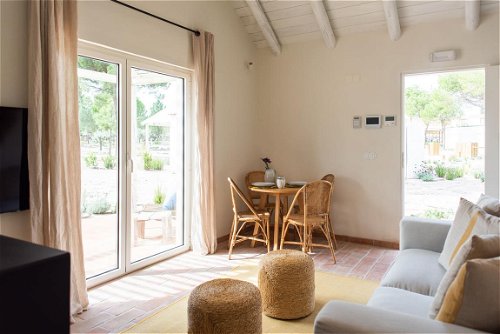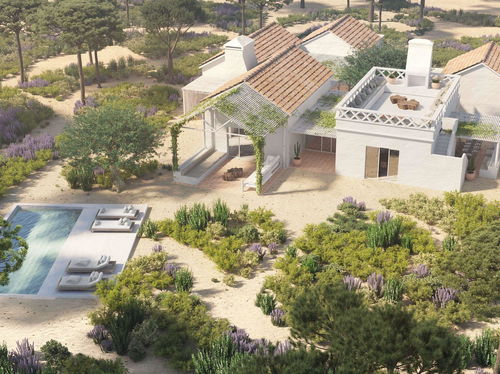Manor house of the 18th century in the historical area of Grândola. Located in an AUR area (Areas of Urban Rehabilitation), close to the municipal market, it also includes a terrace overlooking the Grândola mountains. This property, with a total 472 sqm area, requires some restoration and it is composed by the main villa, distributed by 2 floors, with 16 divisions and a 372 sqm area. The villa, despite being in total property, currently comprises two independent houses. This unique building, with an excellent location, is close to local business and services, where you can take long strolls to appreciate the beauty of the city and its gastronomy. Good accesses to the A2 motorway, 1h20 away from Lisbon, 2h away from Algarve and 20 minutes away from the main beaches, such as Carvalhal, Melides, Comporta and Tróia. It is in the Alentejo Coast, at the confluence of several regions, a place of fusion of knowledge and diverse flavours, that we find the municipality of Grândola, a new and differentiating touristic destination. The council of Grândola has an approximate area of 825.9 square kilometres, an extensive maritime coast, and borders to the north with the municipality of Alcácer do Sal, to the east with Ferreira do Alentejo, to the south with Santiago do Cacém, the west with the Atlantic Ocean, and to the north and northwest with the Sado river, that separates it from the municipality of Setúbal. The Serra de Grândola, predominantly schist, dates from the lower carbon, represents the ancient geology of the Iberian Plateau and has its maximum point in the hill of Atalaia, with 326 metres of altitude. Constituting a physical obstacle that delimits the coastal area, with influence on the climatic and landscape aspects, is the least populated area of the county, being mostly covered with cork oaks. The Plain is characterized, to the east, by the prolongation and the gentle slopes of the mountain, and to the north and northwest by the tertiary formations of the Sado basin, consisting of sands and clays of the Pliocene. From north to south, the forest cover gradually passes from pine forest to “montado”(oak forest), and it is in this area that most of the population lives. The Coastal Coast is characterized by its 45 km of white sand beaches and crystal clear waters, and the seabed is sandy and muddy, as a result of the accumulation of sedimentary materials. To the interior of the territory, dune systems of varied size and typical vegetation are developed, which then extend into large patches of pine forest. In the Coast, the lagoon of Melides stands out and, further north, the Sado estuary, with the rice fields of Carvalhal, and the muddy banks and the salt marshes of Troia. A
The information provided on this webpage has been obtained from sources believed reliable, this may be subject to errors, change of price, prior sale, or withdrawal without notice. Fine Luxury Property Ltd®, it’s partners and collaborators do not guarantee the accuracy of any information contained on our websites.
Funciones
- Pharmacy
- Terrace










